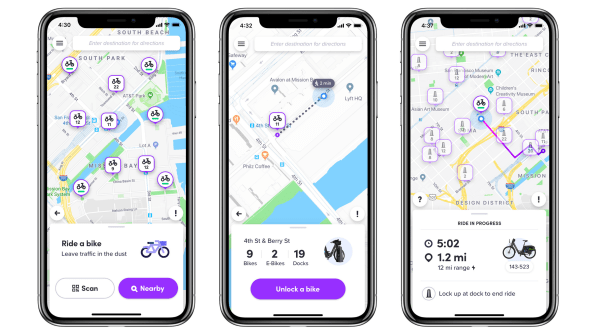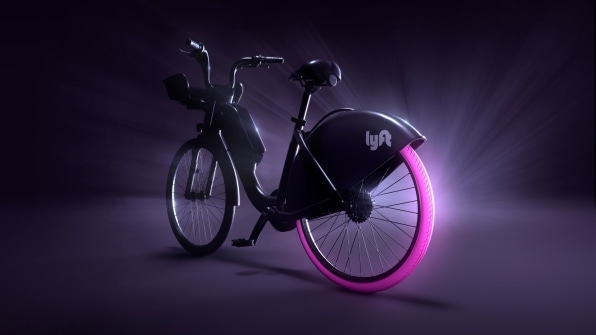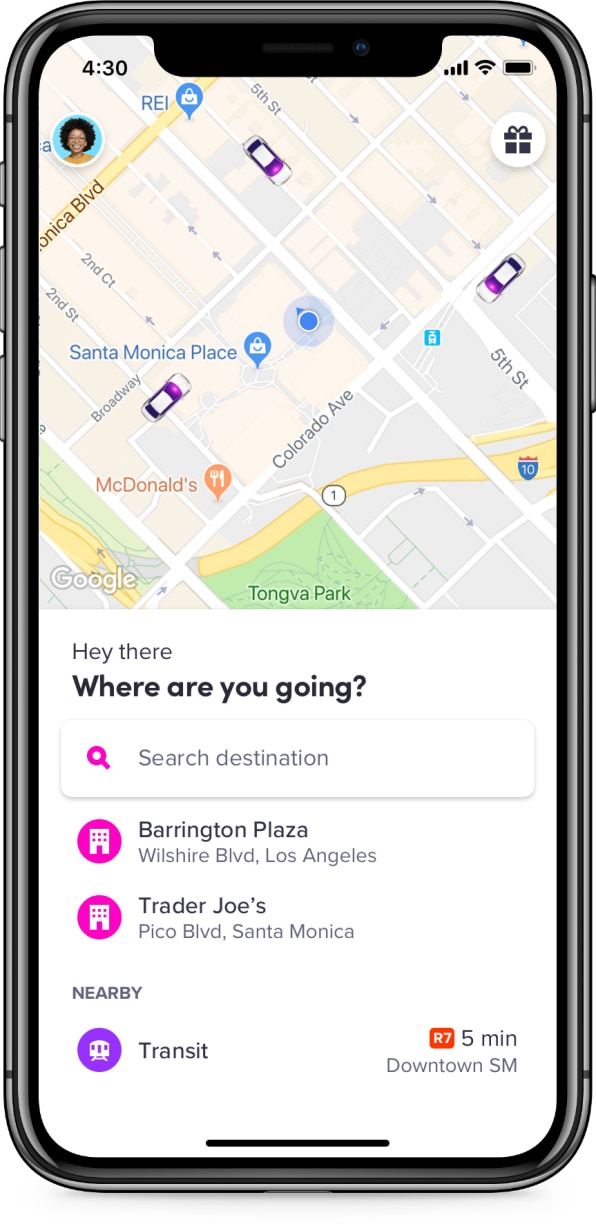If you pull up the Lyft app in Washington, D.C., you’ll see details about the nearest bus or train or where to pick up a scooter. Soon, you’ll also see the closest bikeshare station. Summoning a car to pick you up–the original purpose of the app–is only one option.
“We have this deeply ingrained car culture in the U.S. that we have to challenge in multiple ways to really get at the heart of it,” says Caroline Samponaro, who leads bike, scooter, and pedestrian policy at Lyft.

Until recently, Samponaro worked at Transportation Alternatives, a New York City-based nonprofit, fighting for the city’s first protected bike lanes, advocating for the creation of Citi Bike, and helping transform Queens Boulevard, a notoriously dangerous road for cyclists. When she first met John Zimmer, one of Lyft’s founders, she’d never used the company’s ride-hailing service herself. She was anti-car. But as Zimmer talked about his plans to acquire Motivate–the company that manages major bike-share networks across the country, including Citi Bike–she was struck by the alignment of their visions for the future of urban transportation.

Writing in 2016, Zimmer argued that within a decade, private car ownership would “all but end” in major cities in the U.S., as autonomous fleets of ride-hailing vehicles make it cheaper and easier to avoid driving yourself. Without cars sitting idle most of the day, space devoted to parking could be used for parks or wider sidewalks or bike lanes. Cities could transform.
Ride-hailing, of course, hasn’t delivered on that promise yet. One report earlier this year suggests that Lyft and Uber are creating more traffic, not taking cars off the road. Around 60% of trips using the service, the report says, would have otherwise been made on foot, or a bike, or public transportation. Other reports found a similar trend. As ride-hailing has grown in popularity, public transit ridership has dropped–and transit systems that were already underfunded are struggling more. But the services don’t need to be inherently at odds: For those who don’t use the bus or subway because the stops are a little too far away, getting a ride to a station might be enough to decide not to drive the entire way. Another study this year found that more than a third of public transit users it surveyed were combining ride-hailing with public transit.

Lyft’s new integration of public transit in its app, which it is slowly rolling out city by city, doesn’t have any direct financial benefit for the company (aside from deflecting criticism about the effects of Lyft on traffic and transit). But it sees it as a key part of its vision of moving people away from driving in their own cars. Bikes and scooters are another piece of the vision. The company acquired Motivate, the bike-share network, in July. It rolled out its first shared scooters in September.
“If 40% of car trips in the U.S. are less than two miles, and people are making many short trips in cities every day, there is a tremendous potential for us to make those trips on bikes and on scooters, and for those trips to be connections to public transit,” Samponaro says. “That’s what Lyft is working hard right now to build out and to make happen.”
The company also wants to help cities make streets safe enough that people feel comfortable walking or biking or riding a scooter. In some cases, that means solving problems that it created itself. On Valencia Street in San Francisco, where there’s a heavily used bike lane, the company now uses geofencing–in a program it calls Lyft Spot–to keep drivers off the street and out of the bike lane. Customers who need a ride can go to pickup zones on cross streets nearby.
“The city has had a long-standing plan to build a protected lane,” says Samponaro. “But in the meantime, we worked with the city to pilot Lyft Spot and we pushed our drivers to designate pickup and drop-off locations off of Valencia to make sure that we were keeping bike lanes free and clear.” Inside cars, the company is now also adding “anti-dooring” decals to help warn departing passengers to look for cyclists before opening the door. It’s also advocating for protected lanes.
“Changing the street design itself is the most important thing we can do to change behavior and reduce crashes,” she says. “So I think Lyft can be a partner by speaking out in support and bringing our partners to the table to do the same. I think we can also do it by supporting advocates on the ground that have been, for a very long time, fighting for bike lanes in cities before it was popular.”
The company plans to use its financial resources to expand the reach of bike-sharing significantly–in New York, for example, Citi Bike will double the area of coverage, triple the number of bikes available, expand discounted memberships for low-income residents, and add other options like more electric bikes (the few e-bikes that are currently in the system get used roughly twice as much each day as other bikes, Samponaro notes). It will also launch bike-share networks in cities where bike-share doesn’t currently exist. At the same time, it plans to expand scooter networks.

Because the company works with transportation holistically, Samponaro argues that it can help lead people to try new modes. “We’re connecting the dots between the ride-share, the transit, the bike, the scooter,” she says. “I think that in and of itself is going to be a game changer for the bike-share systems, because we’re going to be connecting a lot of people that maybe never would have tried those systems to bike-share.”
As the company scales up bikes and scooters, it aims to get 1 million cars off the road by the end of 2019. By 2020, it also plans to have 50% of its rides be shared rides. Everything it does, she says, is “driving at our city partners’ larger goal of getting people out of cars and onto more sustainable modes.”
In what could be the biggest move, the company is also considering how it can incentivize people both to use shared rides for trips and to try other options. In a recent month-long experiment called the Ditch Your Car Challenge, it gave selected car owners Lyft Shared credits, a temporary Zipcar membership, public transit fares, and bike-share credit to see what would happen. After it ended, more than half of the participants said that they planned to continue to drive less, and 68% said that they felt less stressed during the challenge.
“Sometimes we think about change as being hard, and people don’t want to do something if it involves change, but I think the stats that we see here kind of speak to the opposite–this potential that giving people more options actually makes them feel like their life is easier and that they have less stress,” Samponaro says.
(86)